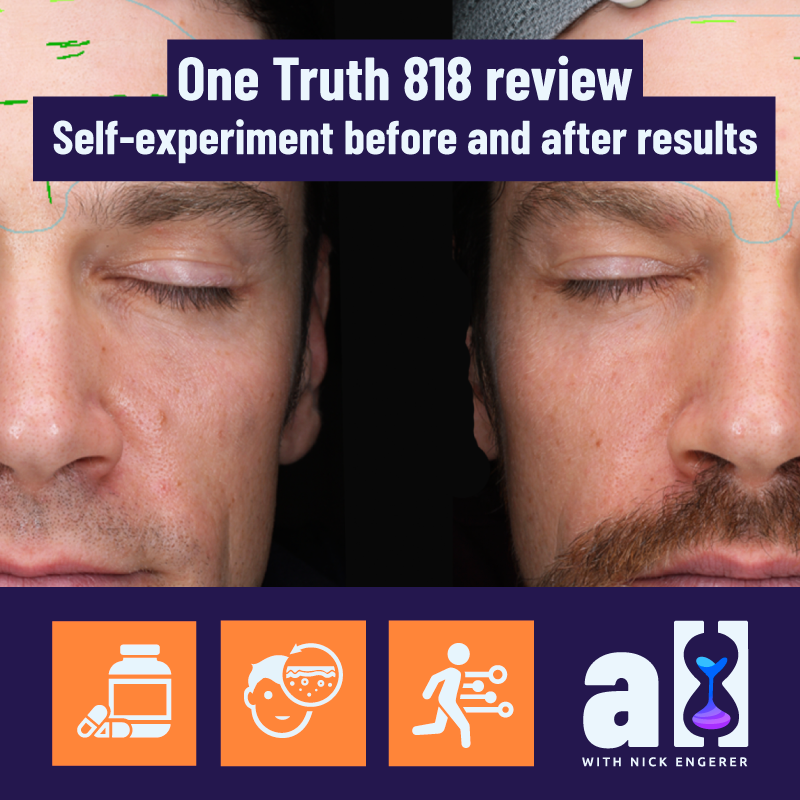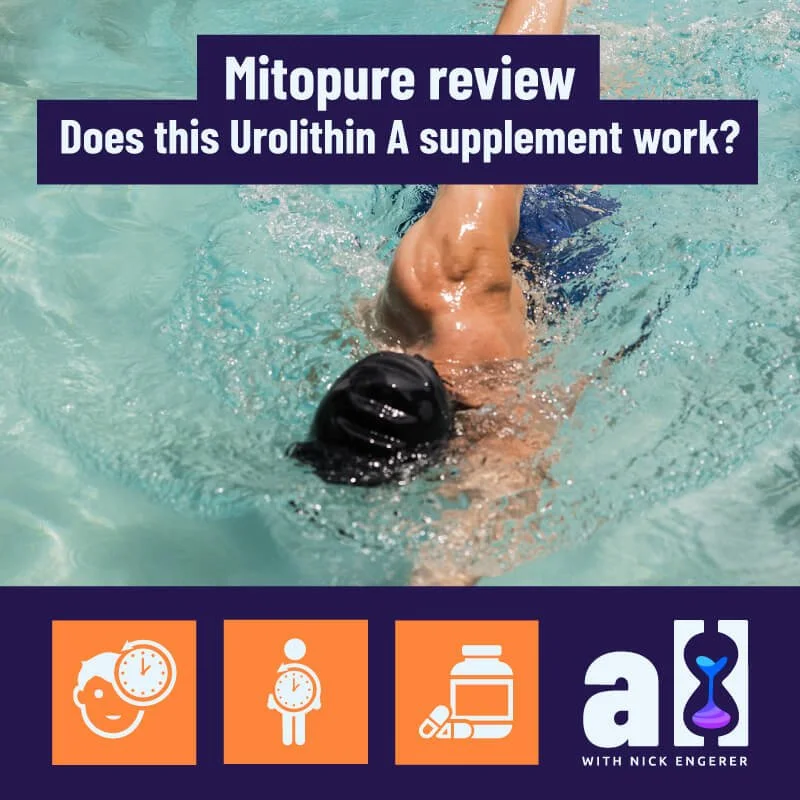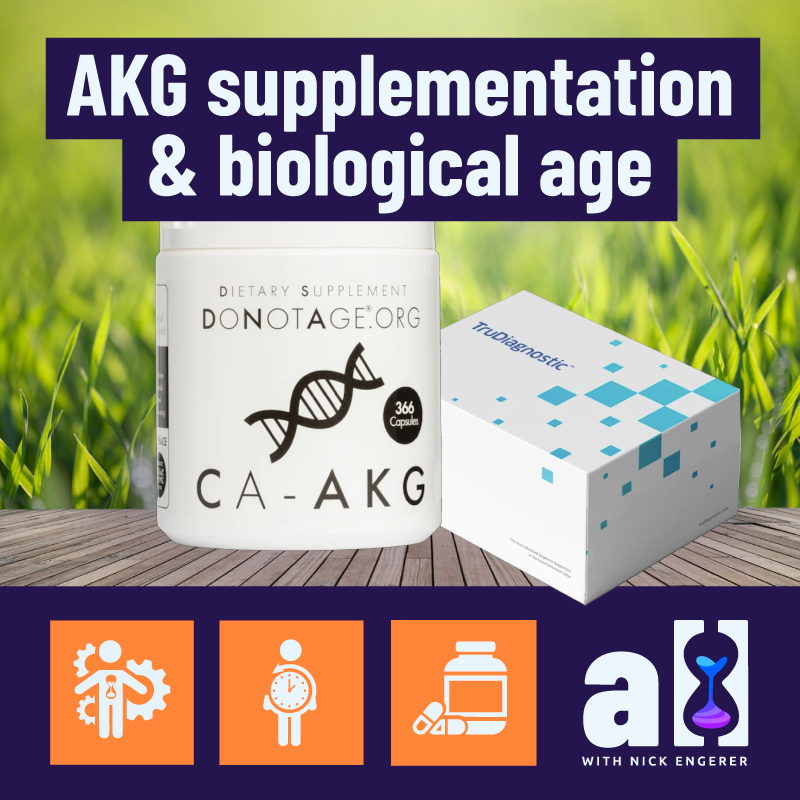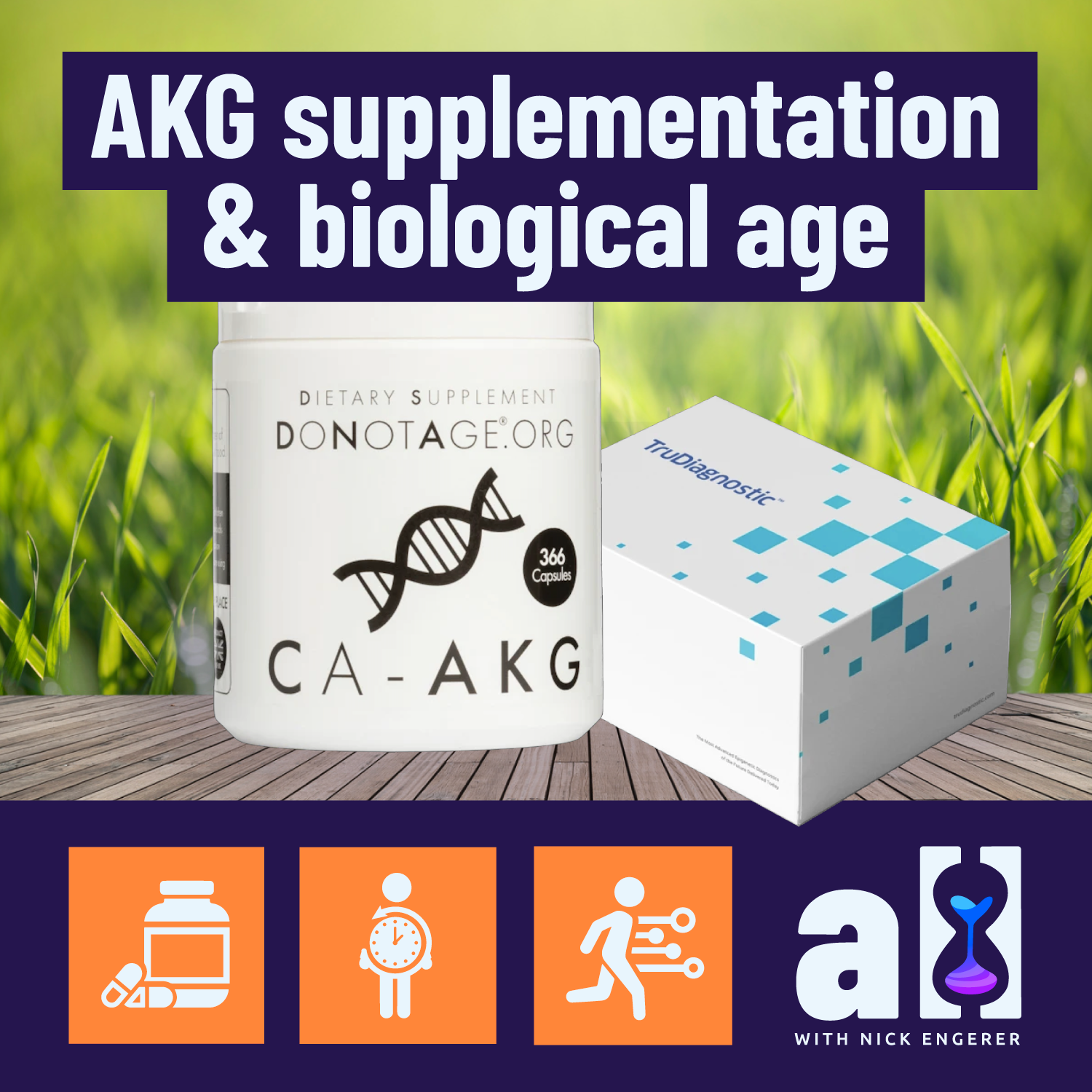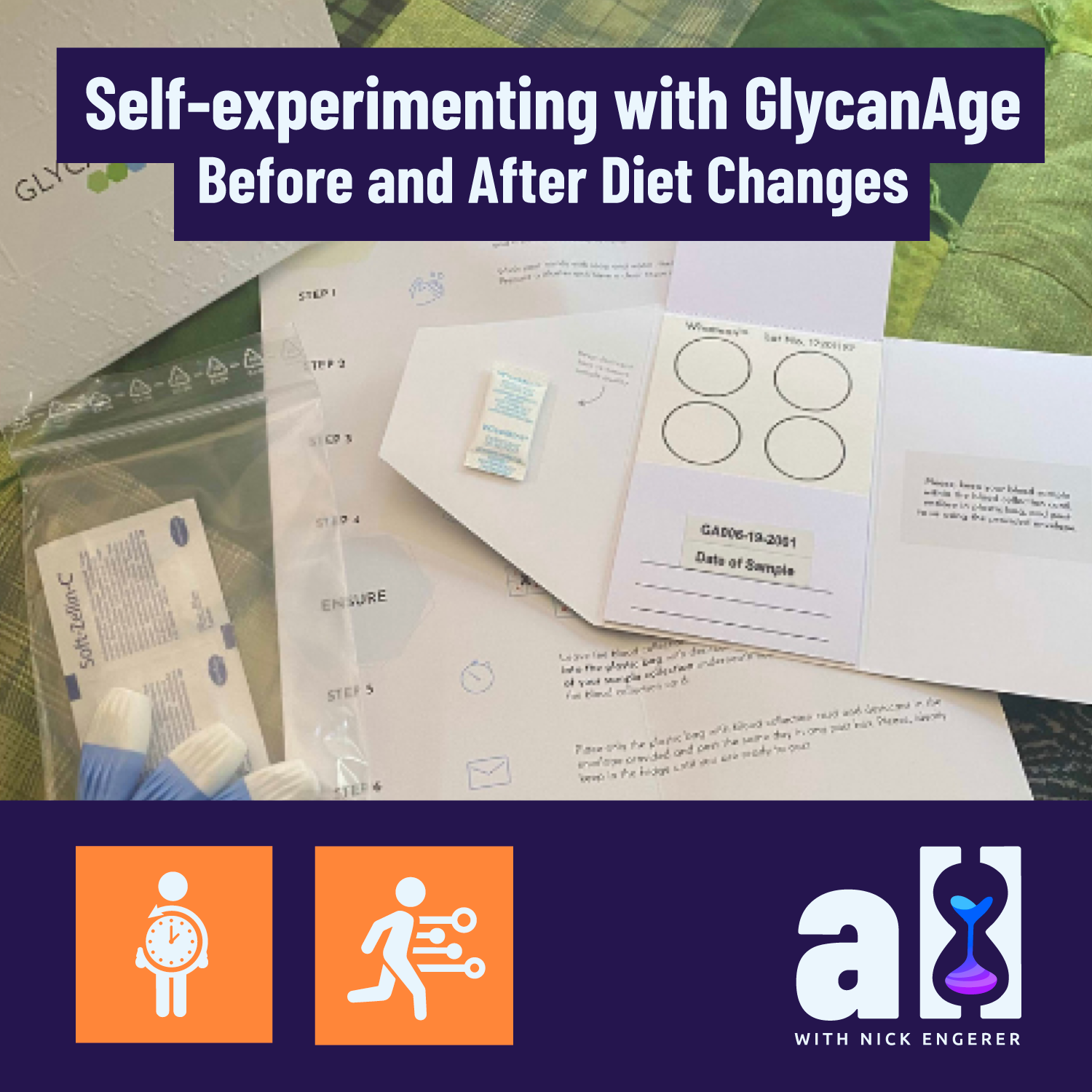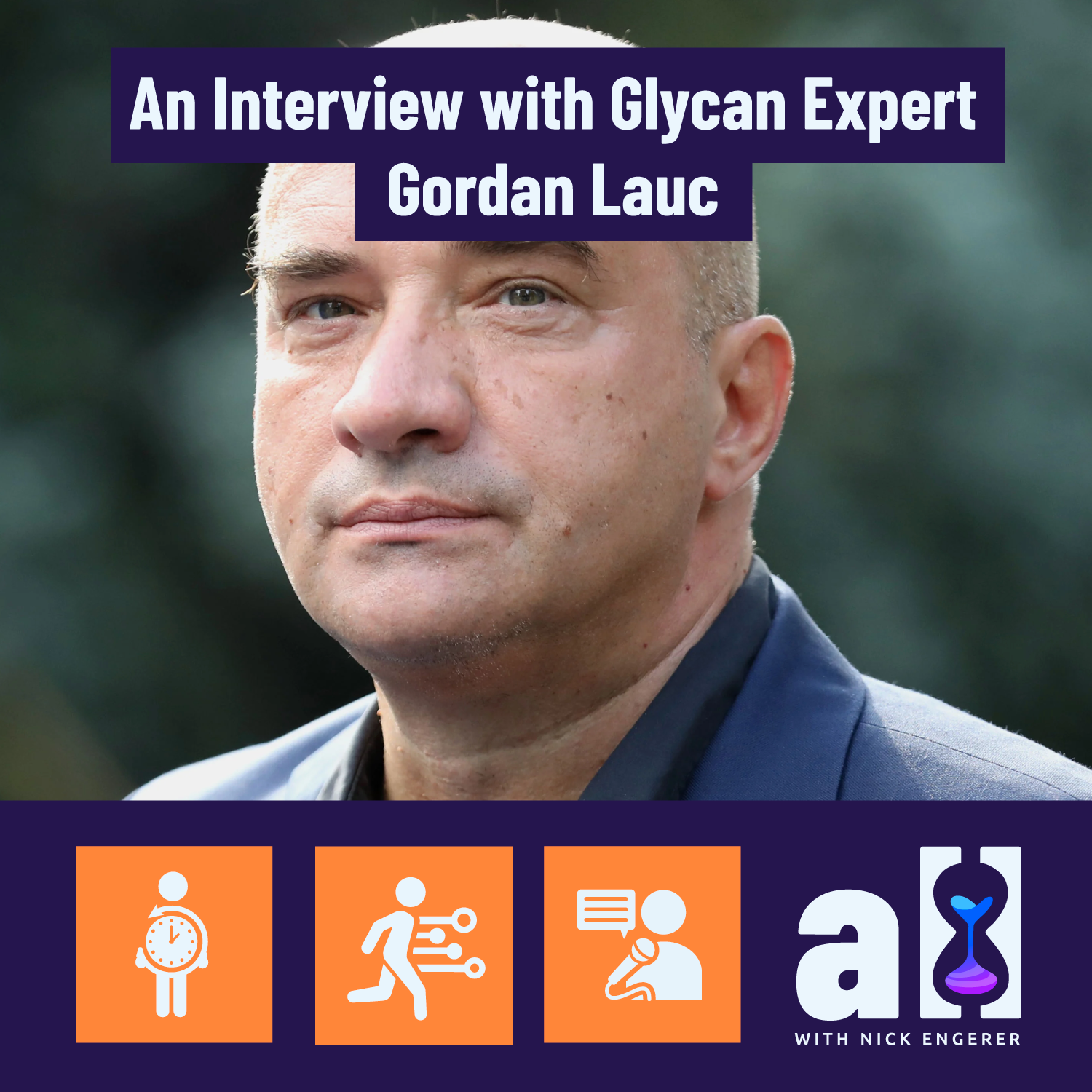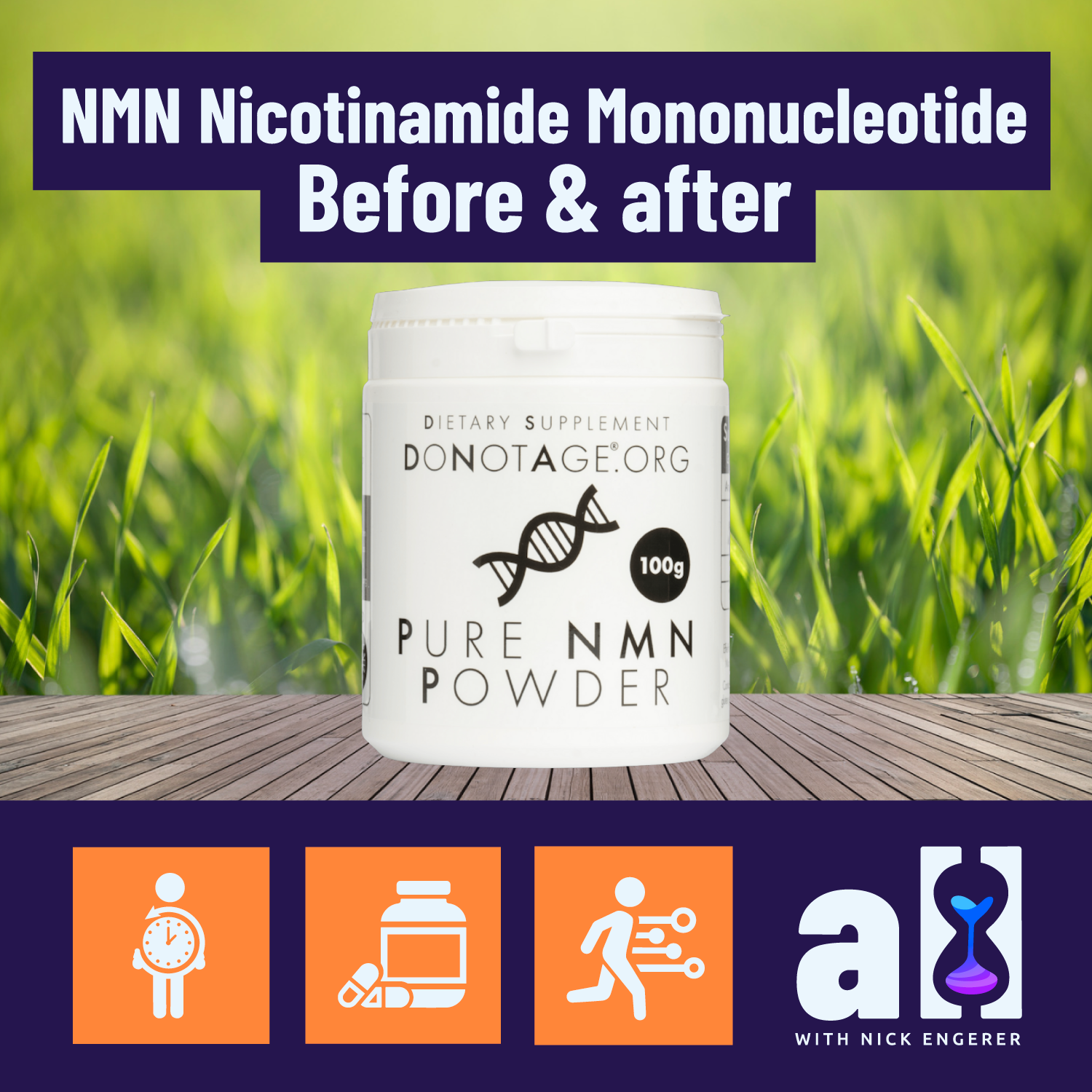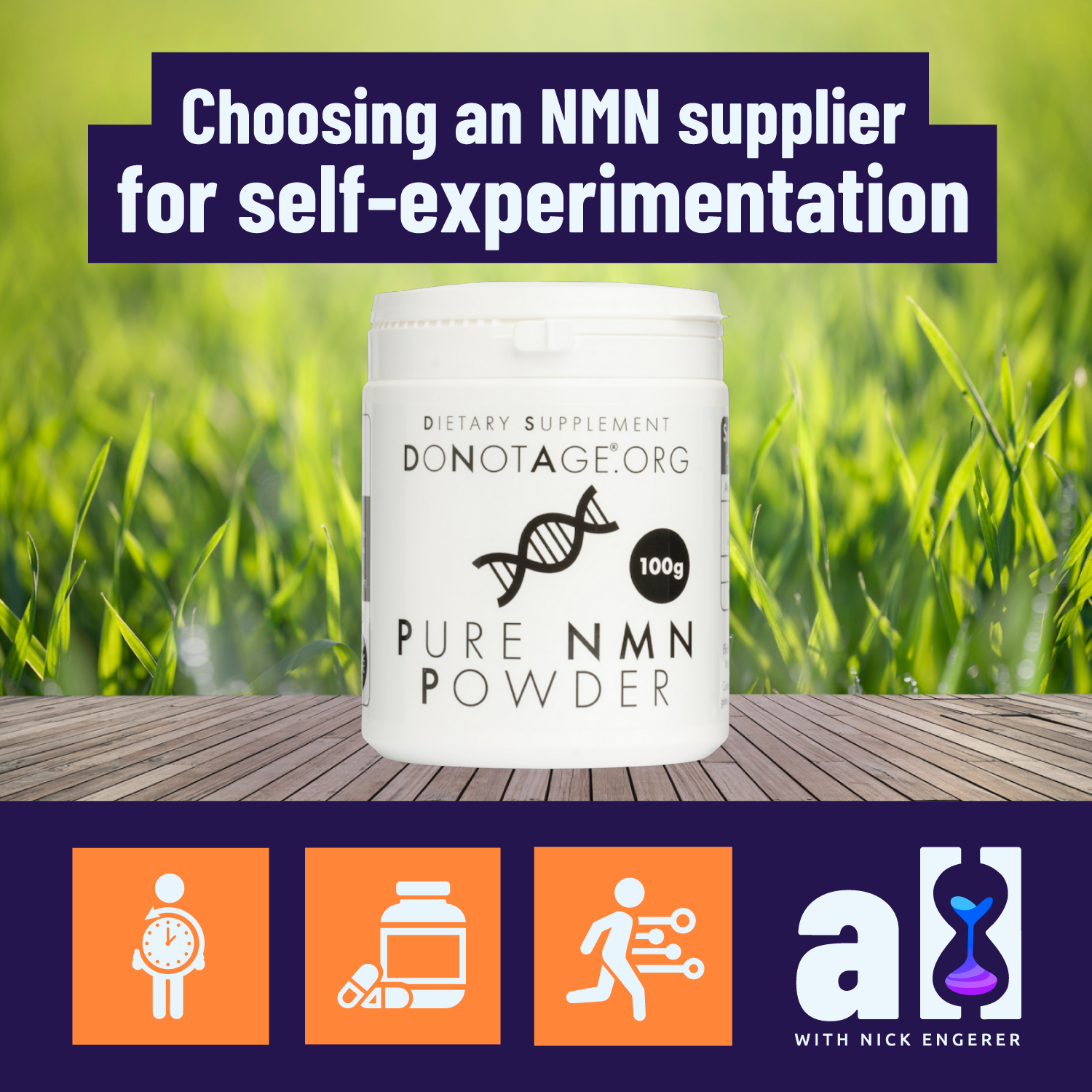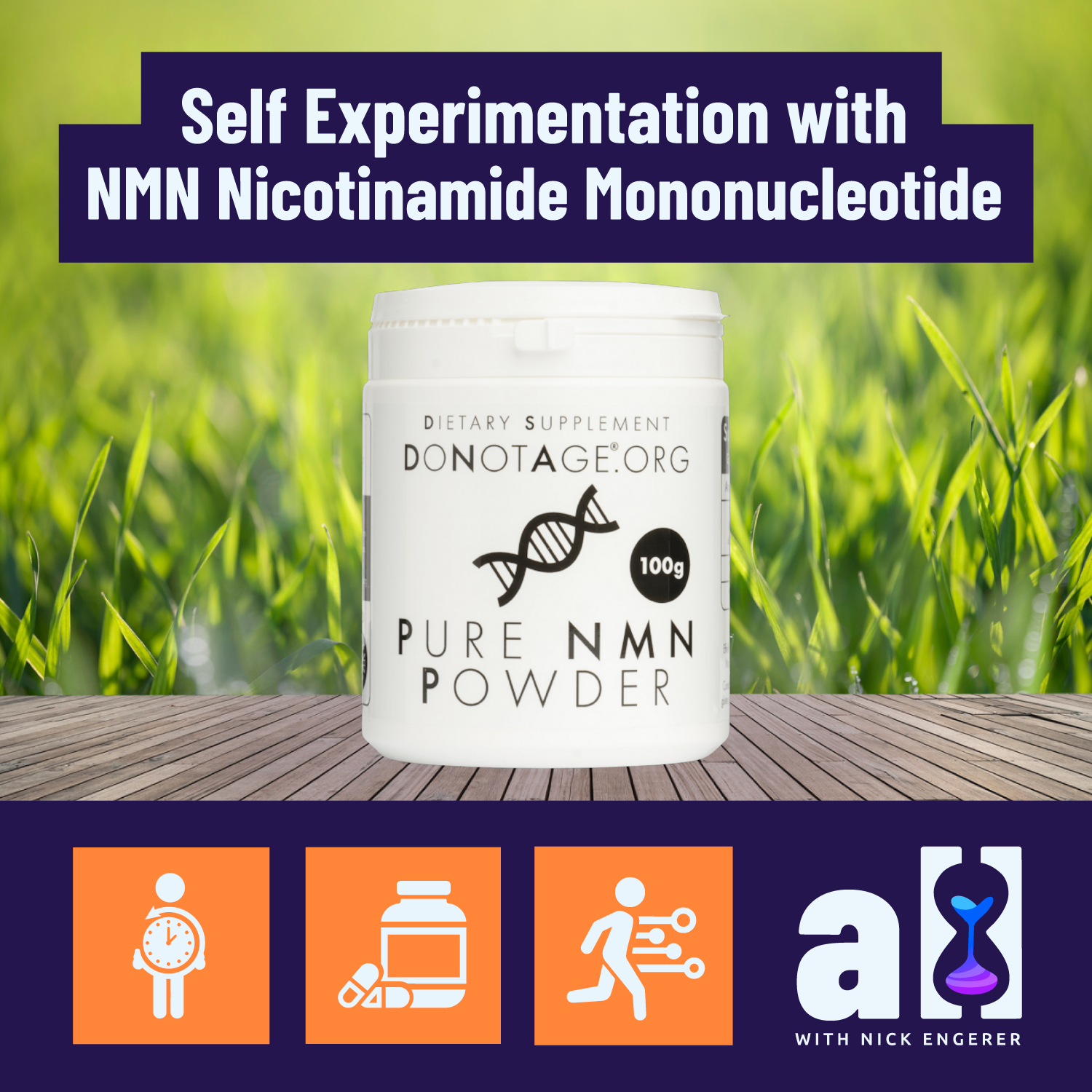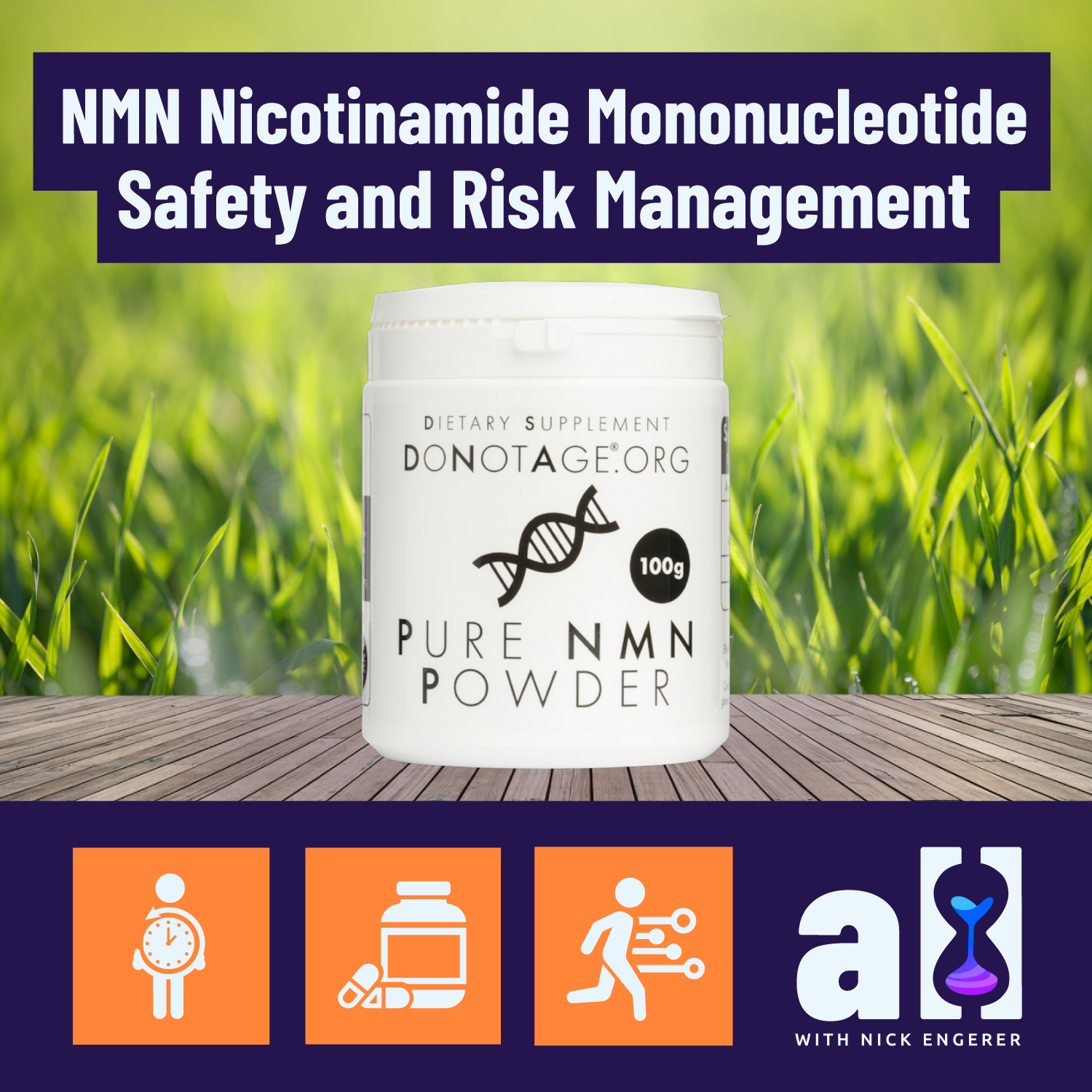Increasing plant diversity improves GlycanAge significantly - A self-experiment
We’ve some ideas on how you might improve your GlycanAge - by eating more types of plants! Read on for more!
GlycanAge test self-experiment results
In a series of recent posts, A Longer Life has been investigating glycans and their many important roles in the body.
There is much to learn, but the key takeaway is that they play an informative role to the immune system by ‘tagging’ which of the many foreign molecules in the both are friend and which are foe.
If you’re across the basics of how the immune system works, you’ll be aware that inflammation is a sign that the immune systems is activated.
And while this can be highly valuable for enacting repair of specific areas of the body (e.g. damaged tissue), it is also a destructive process (e.g. tear down and rebuild that tissue).
As we age, levels of chronic inflammation rise, both as a result of and a cause of the aging process.
In your quest to maintain your ‘youthfulness’ and achieve longevity, monitoring and improving levels of inflammation in your body is highly important!
However this has not always been easy. There are many ways to measure inflammation in the body - which to choose? How to improve it?
It turns out, there is a simpler answer - don’t track the result of inflammation, instead track the molecules which signal - should inflammation be ‘on’ or ‘off’?
When you buy through our links, we may earn a commission. Thank you for supporting our business
That line of thinking brings us to glycans and specifically the GlycanAge biological age testing kit.
In this post, we’ll review the results from our Founder Nick’s GlycanAge self-experiment. For the nitty-gritty details on the how & why the experiment was conducted, including the hypothesis and scientific framework, be sure to read that post first!
Read on for a few basics, and then a deep dive into the results.
Self-experimenting with diet to inform the immune system
Hey everyone, Nick here! I’m excited to share with you that I was able to improve my GlycanAge by 6 years in just 3 months, with a specific dietary change.
That change? Eating at least 30 different plants per week.
This self-experiment was completed in effort to improve a GlycanAge that was already quite favourable (30 yrs for a 35 yr old) in an individual who was already ‘doing all of the right things’ with diet, exercise, sleep and stress.
From my perspective, -5 years just wasn’t quite good enough. I was convinced I could improve further, as I’d achieved much younger biological age by other measures, and I like a good challenge!
To complete this self-experiment I dutifully designed and tested a specific hypothesis, which was:
“By programming the immune system with a diversity of plant information (local & organic where possible), chronic inflammation will be reduced as the immune system learns more about what is friend and what is foe, leading to an improvement in the Glycan Age”
Let’s briefly talk about why adding more plants to the diet could be reasonably expected to improve GlycanAge and then take a look at the evidence which shows it worked.
Why would 30 plants per week improve GlycanAge? The basics
Of course I suggest you read the introductory post, which will offer you much more detail, but here is the main line of reasoning why eating a diversity of plants is likely to improve your GlycanAge.
Delicious veggies from our local farmers market. Full of environmental information just waiting to program your immune system. Eat me!
The immune system is constantly monitoring what you eat - deciding what should and should not be allowed into the bloodstream.
This surveillance occurs in the small intestine at your “intestinal epithelial cells” (IECs) which act as a filter, whereby nutrients, electrolytes, water and beneficial bacteria are allowed into the bloodstream (while the ‘baddies’ are not)
The immune system that is supporting the IECs with this ‘filtering' step is learning what is good and what is bad through the diet you eat
This effectively means that your diet is information about your environment
The diet is then responsible for telling the body, through a diversity of food and organisms, what is ‘friend’ and what is ‘foe’ - and it does this through partnership with glycans
Thus the hypothesis:
When you don’t eat a diverse diet your immune system receives less information = more inflammation (and higher GlycanAge)
However, the opposite is also hypothesised to be true: more information = less inflammation (and lower GlycanAge)
Did it work? Experimental results
The results from this self experiment are provided through the GlycanAge online dashboard, which delivers a biological age result, but more importantly, a breakdown of the three most important glycan indices.
These indices summarise the 24 glycan types which regulate inflammation in the body, and are broken down in GlycanAge test results as follows:
G0 are glycans without galactose, which are the most proinflammatory. These are represented by the Mature Index.
G2 are glycans with two galactoses, which are suppressing inflammation. These are represented by the Health Index.
GS are glycans with sialic acid, which also suppress inflammation. These are represented by the Youth Index.
Result: GlycanAge improves by 6 years
I am presently 35 years old. My GlycanAge at the start of the self-experiment was 30, an encouraging result. After eating 30+ plants per week for 3 months, my GlycanAge further improved by 6 years, to a value of 24.
If you’re interested to understand a bit more about how this biological age estimate works, you can read our interview with glycan expert Prof. Gordan Lauc.
One very important question that we asked Prof. Lauc was about the importance of the absolute value of biological age versus the relative changes that occur over time.
“It’s also important to not worry about the absolute number, because the absolute number is also strongly affected by genetics. Approximately 30-50% of the GlycanAge is determined by your genes, you cannot fix it.
It is the relative number, the pace of changes in biological age which are important. If your GlycanAge is increasing more slowly than your chronological age, then that’s good. ”
Result: glycan indices improve across the board
One aspect of the GlycanAge test kit that I really like is that they give me direct access to raw data, a summary PDF report and insightful indices which breakdown the biological age estimate further.
Not many biological age test kits will offer you this level of detail, and it provides an important layer of additional insight into why a given self-experiment worked/didn’t work for improving biological age.
Intriguingly, the self-experiment resulted in across the board improvements in these indices. The changes in the % relative to my peers (percentiles) reveal this in a straightforward way.
For example, the ‘Health - G2’ index improved by 0.11. What does that mean? My result is now better than 60% of others in my age group, whereas before it was only 49% (a below average result).
The three major glycan indices at the start of the self-experiment.
The three major glycan indices at the end of the self-experiment.
Improving GlycanAge with diet: Discussion
Interpreting the results of a self-experiment is very important. We cannot simply look at the data in results form and make a conclusion. In the spirit of science, we must discuss them!
The most important aspect to discuss here, is how the self-experiment was controlled. In essence, this means limiting as much as possible, any external factors which could ‘confuse’ the results.
Importantly, we need to examine any changes in the four main drivers of GlycanAge results. As Professor Lauc outlined for us in his in-depth A Longer Life interview, these are: stress, sleep, exercise and diet.
Let’s briefly review each.
Controlling diet
I kept a simple list organising plants I ate into groups of 10 for each week of the self-experiment. This was done in the ‘notes’ app on my iPhone and was very easy to manage.
In our experiment we turned the ‘diet knob’ in a very specific way. By introducing the primary experimental change of eating 30+ plants per week.
First of all - compliance. I can confidently report that I was fully compliant over the 12 week period of experimentation.
In no week did I eat less than 30 different plants. I ate as many as 40 different plants and as few as 31 different plants.
I did not change my dietary protein, carbohydrate or fat ratios or overall intake of calories.
Inevitably, I did eat more soluble fibre due to increased plant diversity, however, I was already eating many organic vegetables and select fruits to begin with.
I just was not eating many different types, instead favouring about 10-15 different plants which I ate repeatedly.
It was as a fun challenge to find new plant foods to try! It resulted in my whole family eating more plants as well - an added bonus.
Controlling sleep
As any good longevity focussed biohacker, I’m quite religious with my sleep schedule.
During the experiment, I did not change my bedtime or my wake-up time. There was no significant changes in sleep duration or quality. I also did not change any sleep-related supplements.
As monitored by Oura Ring, sleep time was between 7.5 - 8 hours per day with a sleep score of 80 on average.
The below is a gallery of images you can click through (4 in total) showing the sleep score and total sleep from early and late in the self-experiment.
Controlling exercise
As set out in the opening post for this self-experiment, I maintained a consistent exercise load to within 10% on average (in a given month) as measured by my Garmin smartwatch and heart-rate monitor.
No significant changes were made to total time exercising, exercise intensity or the type of exercise I was completing.
I kept up my routine of 4 weeks of triathlon training with a one week de-load. Average load over the period was unchanged at around ~750-800.
Controlling stress
Do you think self-experiments are totally rad? So do we!
Subscribe to be notified when we launch new ones, including guiding information on how you can do them yourself!
This aspect of the self-experiment was more interesting! I’d originally set out to complete this experiment over 6 months with two GlycanAge tests. However I cut it off at 3 months. Why?
Australia went into a sudden COVID lockdown, upending my life routine and introducing significant additional stress (homeschooling in and of itself would confound the results, haha!).
I simply could not continue the self-experiment for the additional 3 months and maintain good control over the experiment.
Thankfully, I was able to complete the 3 month self-experiment with no significant lifestyle or stress related changes. So this was well-controlled overall.
Conclusion: Eating a diversity of plants significantly improved my GlycanAge
To design this self-experiment, I used Dr Jenna Macciochi’s suggestion to eat 30+ plants per week to boost the immune system.
Immunity: The Science of Staying Well is one of the most up to date, accessible and helpful books out there on building a healthy immune system. Check it out! (Amazon Affiliate link)
We are fortunate to have a pretty clear cut result in this self-experiment.
It was well-controlled and occurred over a short-time frame, with very limited opportunity for external factors to confuse the result.
Moreover, the magnitude of the change in GlycanAge was significant. A 6 year improvement is well outside the measurement error.
Had my GlycanAge improved by only 1-2 years, we would not be able to make such a strong conclusion.
In addition to the size of the change in GlycanAge, there was significant improvement in all three of the glycan indices, where I improved by ~10% in age group relative terms.
This firmly suggests hypothesis looks to have been ‘proven’, with the expressly limited scope of this being an ‘n of one’’ dataset.
Conclusion: Eating more plants improves GlycanAge (for me, and maybe you as well!)
Practically, what does this mean?
For one, I know that I should most definitely keep eating 30+ plants/week! I now consider this part of my longevity strategy.
This is in addition to other tactics like supplementing with NMN, which I also determined to improve my biological age through a seperate self-experiment.
This is precisely how we should use these types of tests. In an intentional and controlled way to test a change and see if it helps you in your longevity journey.
While the ‘conclusion’ is only applicable to myself, this design of this self-experiment provides the opportunity for other wellness and longevity enthusiasts (that’s you!) to use this approach to improve their biological age.
However, if you do not already have healthy diet, exercise, sleep or stress habits - start with those first! Don’t forget that losing weight is the surest path to reducing inflammation and improving your GlycanAge (we asked Gordan!)
If you plan to give it a try, be sure to reach out on Twitter or Instagram and let me know!
You can check out GlycanAge test kits here, and don’t forget to use the code “LONGEVITYBLOG” to save 15% on your order!
 |
FDA & TGA DISCLAIMER
This information is intended for educational purposes only and is not meant to substitute for medical care or to prescribe treatment for any specific health condition. These blog posts are not intended to diagnose, treat, cure or prevent any disease, and only may become actionable through consultation with a medical professional.

















